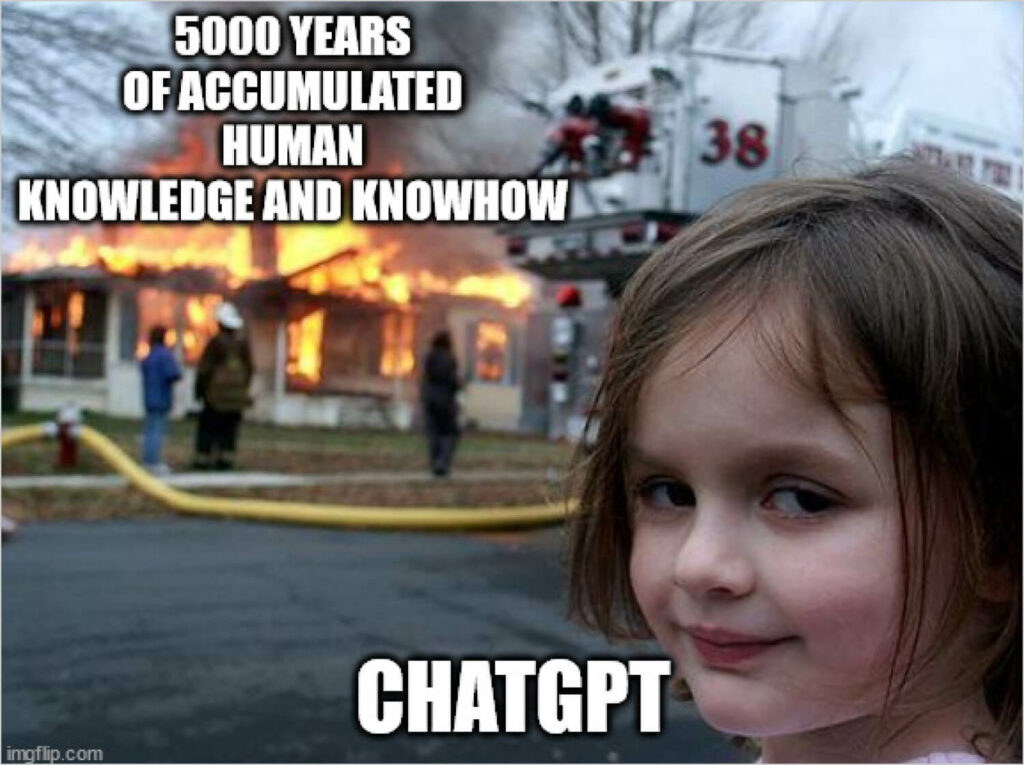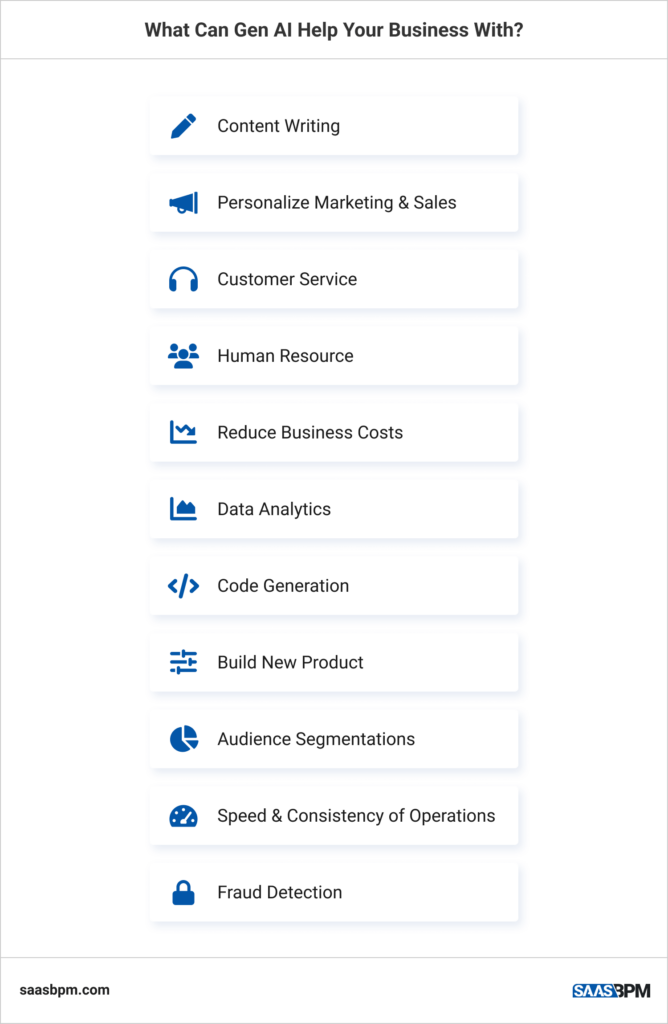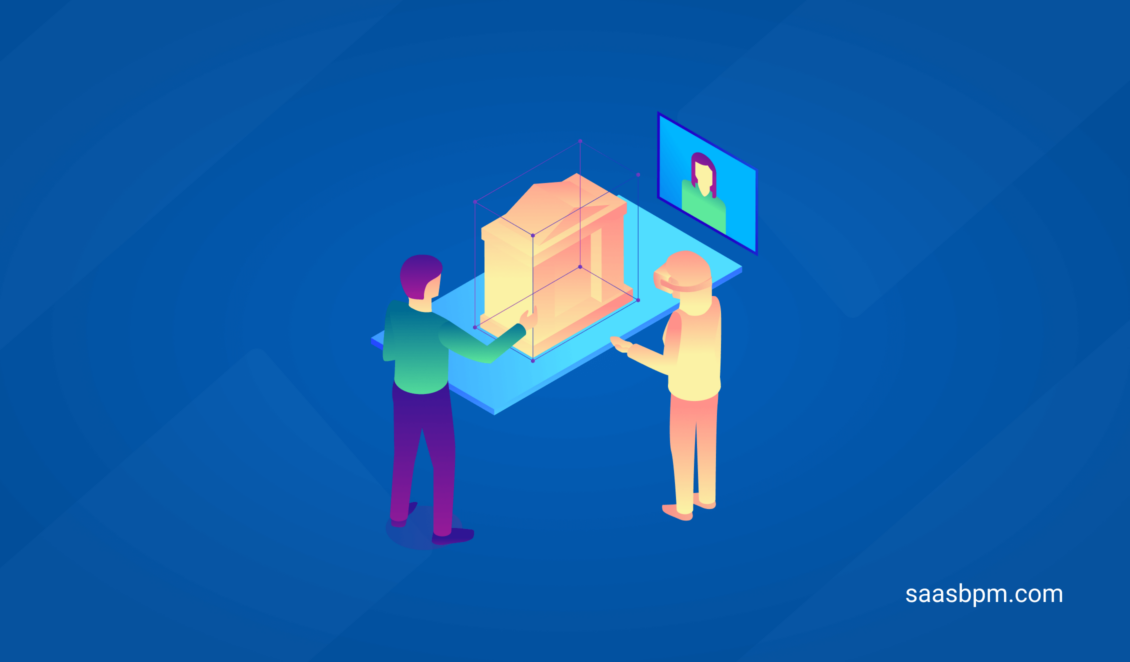Gen AI, also known as artificial intelligence, is a technology that enables the creation of various forms of content such as text, images, audio, and synthetic data. Recently, there has been a surge of interest in this technology due to the development of user-friendly interfaces that allow for the quick generation of high-quality text, graphics, and videos.
It is worth noting that Gen AI is not a new concept and was initially introduced in the 1960s with the emergence of chatbots. However, significant advancements occurred in 2014 with the introduction of generative adversarial networks (GANs), a specific type of machine learning algorithm. GANs enabled generative AI to produce remarkably realistic images, videos, and audio that closely resemble real people.
At the moment, generative AI takes up 41% of the North America market share and is expected to grow almost five times by 2028.
This technological breakthrough has created exciting opportunities, such as improved movie dubbing and the creation of engaging educational content.
However, it has also raised concerns about the misuse of generative AI, particularly with the rise of deepfakes, which involve digitally manipulated images or videos. Furthermore, there are worries about potential cybersecurity threats, including malicious attempts to impersonate an employee’s boss convincingly.
Also, in sensitive industries, additional security measures are needed – for example, if you buy and sell firearms online, you now need to make sure you have high risk credit card processing in place.
Generative AI also has a lot of benefits for business, and facilitates business process management so that organizations can be more productive and focus on the important stuff. Let’s find out how.
What Is Gen AI?
First things first, what is Gen AI?
Generative AI, or Generative Artificial Intelligence, is a cutting-edge technology that enables the creation of diverse forms of content, such as text, images, audio, and synthetic data. It has gained significant attention due to its ability to generate high-quality content quickly and efficiently.
Unlike traditional AI systems that rely on predefined rules and patterns, generative AI utilizes advanced algorithms to learn from existing data and generate new content that resembles the original data. It can produce authentic and realistic outputs, making it a powerful tool for various applications.
One notable example of generative AI is the field of natural language processing, where language models like GPT-3 have been trained on vast amounts of text data. These models can then generate coherent and contextually relevant text, mimicking human-like language patterns. This has applications in chatbots, content generation, and even creative writing, for instance, interfaces like ChatGPT, Bard, DALL-E and DeepMind.
How Does Generative AI Work?

Generative AI operates on the principles of machine learning and leverages deep learning techniques to mimic human-like creativity. At its core, generative AI is built upon vast amounts of data and algorithms that allow machines to generate original and coherent content.
Generative AI is rooted in machine learning, a subfield of artificial intelligence. It employs a learning algorithm that enables the system to recognize patterns and make predictions. Through a training process, the AI model analyzes and processes large datasets, identifying underlying patterns and structures.
By using published content as a reference, generative AI learns from existing data to create new patterns and generate original content. This may involve training the model on various types of media such as text, images, or even music. By understanding the patterns and structures within the data, generative AI can then produce novel outputs based on the learned knowledge.
Deep learning, specifically neural networks, forms the foundation of generative AI. Neural networks are designed to mimic the human brain’s interconnected network of neurons. They consist of multiple layers of artificial neurons, each responsible for processing and transmitting information. Through this architecture, deep learning models can learn complex representations and generate more sophisticated outputs compared to traditional machine learning models.
9 Generative AI Models
Gen AI models have significantly advanced the capabilities of AI in generating diverse and realistic content across various domains. Here are 9 of the most prominent ones:
GPT-3 (Generative Pre-trained Transformer 3)
Developed by OpenAI, GPT-3 is a cutting-edge language model that excels in natural language processing tasks. It has a massive neural network with 175 billion parameters, enabling it to generate highly coherent and contextually relevant text across a wide range of topics.
StyleGAN (Style-Generative Adversarial Network)
StyleGAN is a generative AI model renowned for generating high-quality images. It can learn the underlying style and structure of a dataset and then generate new images that possess similar characteristics. StyleGAN has been utilized in various creative applications, including art, fashion, and graphic design.
DALL·E
Developed by OpenAI, DALL·E is a remarkable generative model that can generate images from textual descriptions. By understanding and interpreting natural language prompts, DALL·E generates visually stunning and conceptually coherent images that match the given descriptions, even for abstract or surreal concepts.
CycleGAN (Cycle-Consistent Generative Adversarial Network)
CycleGAN is a model that excels in image-to-image translation tasks. It can transform images from one domain to another without the need for paired training data. For instance, it can convert horse images into zebras or day scenes into night scenes, showcasing its versatility in generating diverse visual content.
VQ-VAE (Vector Quantized Variational Autoencoder)
VQ-VAE is a generative model that focuses on image compression and synthesis. It uses a combination of variational autoencoder (VAE) and vector quantization techniques to learn a compressed representation of input images. This model can generate new images by decoding the learned compressed representations.
Pix2Pix (Image-to-Image Translation with Conditional Adversarial Networks)
Pix2Pix is a generative model that specializes in paired image-to-image translation tasks. By training on a dataset of input-output image pairs, Pix2Pix can learn to transform images from one domain to another while preserving structural details. It has been used for tasks such as converting sketches into realistic images or generating maps from satellite imagery.
ProGAN (Progressive Growing of GANs)
ProGAN is a variant of Generative Adversarial Networks (GANs) that enables the generation of high-resolution images. It employs a progressive training approach, starting from low-resolution images and gradually increasing the resolution. This technique allows ProGAN to generate highly detailed and realistic images.
Transformer-XL
Transformer-XL is a generative model designed specifically for sequential data, such as text or music. It overcomes the limitations of traditional Transformers in handling long-range dependencies by introducing a segment-level recurrence mechanism. This enables the model to generate coherent and contextually rich sequences of text or music.
BigGAN (Big Generative Adversarial Network)
BigGAN is a powerful generative model that focuses on generating high-quality images. With a large-scale GAN architecture and specialized training techniques, BigGAN produces visually stunning and diverse images across a wide range of categories, surpassing the limitations of earlier GAN models.
How To Use Gen AI For Business
As we explained, this technology is quite impressive and has a lot of variations depending on what content you need it for. Here are some generative AI examples of business challenges such tools can help with:

1. Content Writing
Gen AI streamlines content creation by generating tailored articles, blog posts, and marketing copy. For instance, an online publication can utilize Gen AI to generate engaging articles by providing key topics and target audience information. This results in time and cost savings while maintaining content quality. Content creation Gen AI tools include ChatGPT, Jasper, SurferSEO and GrowthBar.
2. Personalize Marketing & Sales
Gen AI enables businesses to create personalized marketing campaigns by analyzing customer data and behavior. For example, an e-commerce platform can leverage Gen AI to provide tailored product recommendations based on individual customer preferences and browsing history. This personalization enhances customer engagement, increases conversion rates, and fosters brand loyalty. You can use tools like Aidaptive and Echowin for that.
3. Customer Service
With generative AI, you can automate customer service processes through chatbots and virtual assistants. An airline company, for instance, can implement AI-powered chatbots to handle customer inquiries, providing instant support and personalized recommendations. This enhances customer satisfaction and frees up human resources for more complex tasks.
4. HR
Imagine how much time you will save if you automate recruitment and talent sourcing – you’d be able to spend more time on training and proper selection, and give your hires the attention they deserve! Although you can’t employ someone by fully relying on Gen AI, it can certainly take a lot of workload off your shoulders. For instance, a recruitment agency can utilize Gen AI to screen resumes, detect certain keywords, and identify the most suitable candidates based on predetermined criteria. This expedites the hiring process, minimizes bias, and improves overall efficiency. Also, business process management tools like SaaS BPM make onboarding feel like a breeze!
5. Reduce Business Costs
Gen AI identifies cost-saving opportunities by analyzing vast amounts of data. An energy company, for instance, can use Gen AI to optimize energy consumption by analyzing historical usage patterns, weather data, and market rates. This enables the company to reduce expenses, improve resource allocation, and achieve significant cost savings.
6. Data Analytics
Tools based on generative AI are great for analyzing large datasets and extracting valuable insights. An eCommerce retailer can leverage Gen AI to analyze customer purchasing patterns and preferences. By identifying trends and predicting customer behavior, the retailer can make data-driven decisions, optimize marketing strategies, and improve overall business performance.
7. Code Generation

Although many developers are still quite skeptical about AI tools with code writing capabilities, these can really save some time when building a website! However, you can truly benefit from this if you are already a good professional who can also do the work themselves. Otherwise, you may end up with a broken code, or a piece of code that doesn’t do what you intend to achieve. The biggest player here is OpenAI Codex, so if you need a hand with Python, JavaScript, Ruby, TypeScript (and a few other languages it supports), feel free to check it out.
8. Build New Product
Gen AI aids in the creation of innovative products. A tech startup can utilize Gen AI to come up with ideas and concepts by analyzing market trends, competitor products, and customer feedback. This enables the startup to develop unique offerings that meet market demands and stand out in the industry.
9. Audience Segmentation
Gen AI assists in segmenting target audiences based on various parameters like demographics, interests, and behavior patterns. This enables businesses to tailor marketing campaigns to specific customer segments, increasing engagement and conversion rates.
10. Speed & Consistency of Operations
Gen AI ensures operational speed and consistency, saving your team a lot of time and boosting customer satisfaction with timely service. For example, a logistics company can use Gen AI to optimize route planning and delivery schedules by considering real-time traffic data, weather conditions, and customer locations. This improves delivery speed, enhances customer satisfaction, and ensures consistent service.
11. Fraud Detection
Gen AI strengthens fraud detection measures by analyzing patterns and identifying anomalies. A financial institution can employ Gen AI to detect fraudulent transactions by analyzing transactional data, customer behavior, and historical fraud records. This enables the institution to prevent financial losses and protect customers from fraudulent activities.
Conclusion
Generative AI models can help you save a lot of time and resources. From content creation, through HR processes, to code generation and fraud detection, utilizing these technologies can help you achieve more, be faster than your competitors, and enhance customer satisfaction. However, make sure you have team members skilled at using it who know their craft well, so that you can benefit from Gen AI to the max.

